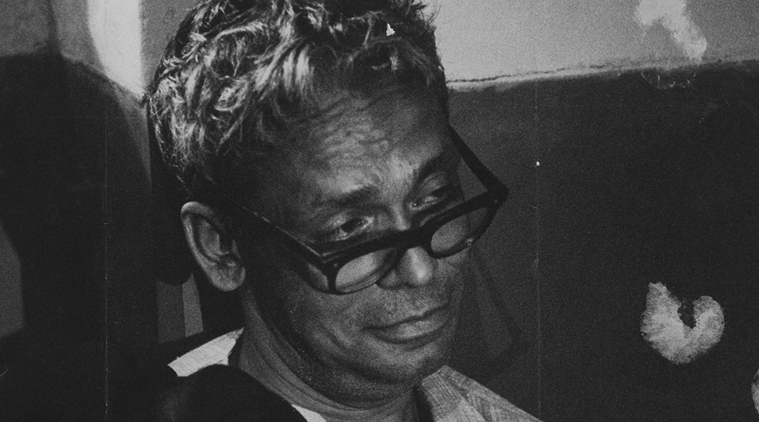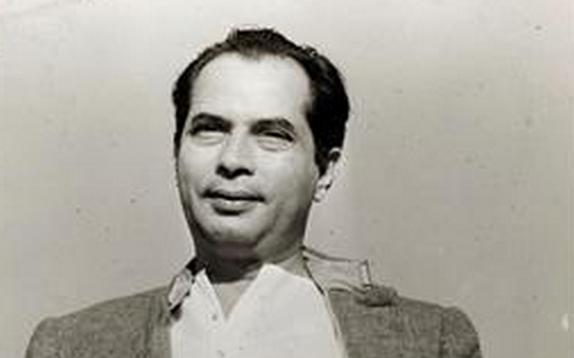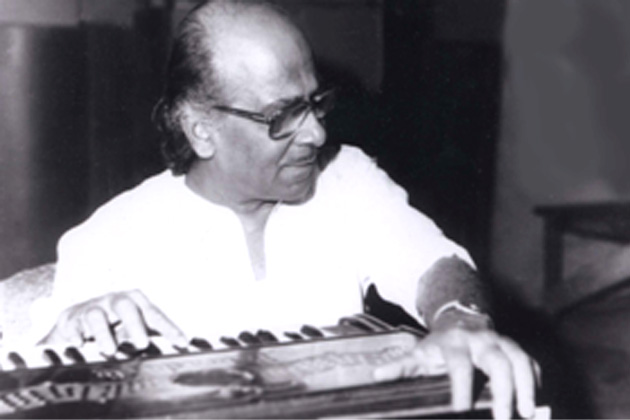Ritwik Ghatak (4 November 1925 – 6 February 1976) was a Bengali filmmaker and script writer. Along with prominent contemporary Bengali filmmakers Satyajit Ray and Mrinal Sen, his cinema is primarily remembered for its meticulous depiction of social reality. Although their roles were often adversarial, they were ardent admirers of each other’s work and, in doing so, the three directors charted the independent trajectory of parallel cinema, as a counterpoint to the mainstream fare of Hindi cinema in India. Ghatak received many awards in his career, including National Film Award’s Rajat Kamal Award for Best Story in 1974 for his Jukti Takko Aar Gappo and Best Director’s Award from Bangladesh Cine Journalist’s Association for Titash Ekti Nadir Naam. The Government of India honoured him with thePadma Shri for Arts in 1970.
At the time of his death (February 1976), Ghatak’s primary influence would seem to have been through former students. Though his stint teaching film at FTII was brief, one-time students Mani Kaul, John Abraham, and especially Kumar Shahani (among many others) carried Ghatak’s ideas and theories, which were further elaborated upon in his book Cinema And I, into the mainstream of Indian art film. Other students of his at the FTII included the acclaimed filmmakers Saeed Akhtar Mirza and Adoor Gopalakrishnan.
Ustad Allauddin Khan – A Documentary by Ritwik Ghatak
Ghatak stood entirely outside the world of Indian commercial film. None of the elements of the commercial cinema (singing and dancing, melodrama, stars, glitz) featured in his work. He was watched by students and intelligentsia, not by the masses. His students have tended to work in the art cinema or independent cinema tradition.
While other neo-realist directors like Satyajit Ray succeeded in creating an audience outside India during their lifetime, Ghatak was not so fortunate. While he was alive, his films were appreciated primarily within India. Satyajit Ray did what he could to promote his colleague, but Ray’s generous praise did not translate into international fame for Ghatak. For example, Ghatak’s Nagarik (1952) was perhaps the earliest example of a Bengali art film, preceding Ray’s Pather Panchali by three years but was not released until after his death in 1977.
Satyajit Ray’s Honorary Award: 1992 Oscars
His first commercial release Ajantrik (1955) was one of the earliest Indian films to portray an inanimate object, an automobile, as a character in the story, many years before the Herbie films. Ghatak’s Bari Theke Paliye (1958) had a similar plot to François Truffaut‘s The 400 Blows (1959), but Ghatak’s film remained obscure while Truffaut’s went on to become one of the most famous of the French New Wave. One of Ghatak’s final films, Titash Ekti Nadir Naam (1973), is one of the earliest to be told in a hyperlink format, featuring multiple characters in a collection of interconnected stories, predating Robert Altman‘s Nashville (1975) by two years.
Ghatak’s work as a director influenced many later Indian filmmakers, including those from the Bengali film industry and elsewhere. Ghatak is said to have influences on Kumar Shahani, Mani Kaul, Ketan Mehta, and Adoor Gopalakrishnan. For example, Mira Nair has cited Ghatak as well as Ray as the reasons she became a filmmaker. Ghatak’s influence as a director began to spread beyond India much later; beginning in the 1990s, a project to restore Ghatak’s films was undertaken, and international exhibitions (and subsequent DVD releases) have belatedly generated an increasingly global audience. In a critics’ poll of all-time greatest films conducted by the Asian film magazine Cinemaya in 1998, Subarnarekha was ranked at No. 11. In the 2002 Sight & Sound critics’ and directors’ poll of all-time greatest films, Meghe Dhaka Tara was ranked at No. 231 and Komal Gandhar at No. 346. In 2007, A River Named Titas topped the list of 10 best Bangladeshi films, as chosen by the audience and critics’ polls conducted by the British Film Institute.
Courtesy: DoordarshanNational
Director- Ramesh Sharma of Third Eye Communication Production
Image Courtesy: Indian express




